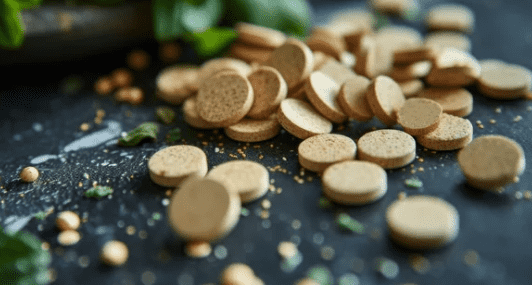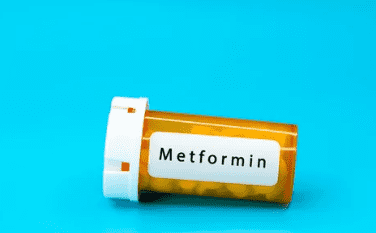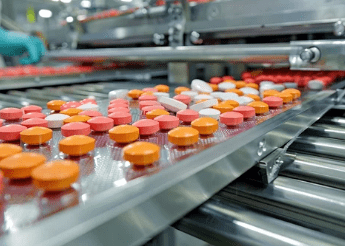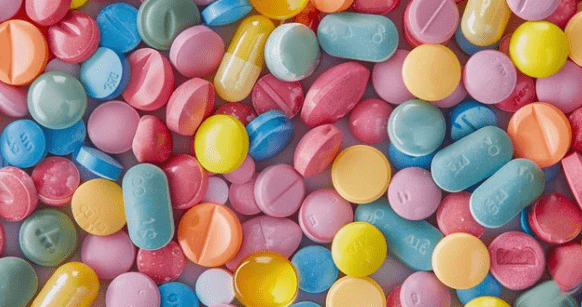In the pharma industry, the effectiveness of a medication depends on its ability to dissolve in the body. Dissolution allows the active ingredients of a tablet to enter the bloodstream and work. There are many factors that influence this process, such as tablet formulation. If you are involved in the medicine business, a good knowledge of tablet dissolution is a must.
Definition of Tablet Dissolution in Pharmaceuticals
In pharmaceuticals, dissolution means a solid medicine dissolves in a liquid to take effect. Because tablets must dissolve into small particles or liquid form to be absorbed by the body. For example, a tablet dissolves in stomach fluid to form a solution. So its active ingredients become available to be absorbed into the bloodstream. Then the substance starts to work. This process occurs in the stomach or intestine.

Dissolution is important for the effectiveness of a medication. If a tablet dissolves too slowly, the medicine may not reach the bloodstream in time to have the desired effect. If it dissolves too quickly, it might release too much of the active ingredient at once. This also could be harmful.
To ensure the correct dissolution time, pharmaceutical companies need to carefully design and test tablets. They use special machines to measure the dissolution speed in different conditions. For example, place it in the acidic environment of the stomach or the intestines. By controlling the dissolution rate, they can make sure the medication works as intended. This measure also ensures the safety of patients.
How Do Tablets Dissolve in Your Body?
The dissolution of tablets in the body is a complex process. It involves several physiological and chemical mechanisms. Here's a general overview for tablets dissolution in the stomach.
Disintegration
After swallowing a tablet, it reaches the stomach. Through gastric peristalsis and gastric acid action,the tablet's surface or coating begins to disintegrate. This step is crucial as it breaks the tablet into smaller granules or particles. It increase the surface area for the next stage.
Dissolution
The smaller particles dissolve in the gastric fluids, forming a solution. The dissolution rate depends on many factors. Common involve the tablet's formulation, the solubility of the drug, etc.
Absorption
Once dissolved, the drug molecules are in a form that can be absorbed. They pass through the walls of the GI tract, usually the small intestine. Then they enter the bloodstream to be absorbed. The absorption rate is influenced by many elements. Some include the surface area of the small intestine, presence of enzymes, and the lipid solubility of the drug.
Distribution
After absorption, the drug molecules are distributed throughout the body via the bloodstream. They travel to their site of action, bind to target receptors, and exert the therapeutic effect.
Four Factors Affecting Tablet Dissolution Time
The dissolution time of tablets is critical for drug efficacy and safety. So the USP and FDA both set standards and guidelines for the dissolution testing of pharmaceuticals. These standards ensure that tablets meet specific criteria for dissolution times and achieve the required effects. Besides, you should also know 4 factors that influence the tablet dissolution time.
Composition and Ingredients

Different materials require various times to fully dissolve. The medicine components mainly include active pharmaceutical ingredients (API), and excipients. APIs, as the key part of a tablet, have the greatest impact on dissolution speed. Because they directly determine the drug's effectiveness. Different APIs have different chemical properties. They would affect how quickly pills dissolve in the body. For Aspirin example. It can dissolve quickly in the acidic environment of the stomach. The whole process only takes 1-2 minutes.
Excipients are the inactive ingredients in a tablet. They help to hold the tablet together, and make it easier to swallow. Sometimes they help tablets dissolve. They primarily influence the dissolution process by changing the tablet's structure and the environment where it dissolves. For example, disintegrants in excipients can absorb water and swell when the tablet contacts liquid. It causes the tablet to break apart quickly. However, these effects are generally less significant than the influence of the API itself.
Tablet Formulation

Tablet formulation means the overall design of a tablet. It includes how APIs and excipients combine in the proper proportions to achieve the desired effect. Tablets can be made as immediate-release or extended-release.
Immediate-release tablets dissolve and release the drug quickly when they contact with liquid. Their main purpose is to provide a rapid release of the drug and fast effects. They generally dissolve within 30 minutes to an hour for full dissolution. This makes them ideal for situations where a fast therapeutic effect is needed. They involve pain relief, fever reduction, or treating acute conditions. For example, Tylenol is designed to dissolve quickly to provide fast pain relief.
Extended-release tablets are designed to release the drug gradually over a longer period. This type of formulation helps maintain the drug's effectiveness for an extended time. They typically require 8 to 24 hours or more to dissolve completely. This mainly depends on the formulation. Extended-release tablets are suitable for chronic conditions requiring steady medication. Take Metformin for example. It is used in the management of diabetes. It can provide steady glucose control over 24 hours.
Coating

Tablet coatings play a key role in dissolution speed. It can control where and when the tablet dissolves in the digestive tract. This ensures the medicine's effectiveness and the patient's safety. The common one is enteric coating. This coating prevents the tablet from dissolving in the acidic environment of the stomach. Instead, the tablet dissolves in the less acidic intestines. This coating helps protect the stomach lining. It also ensures the medicine is released where it is most effective.
Tablet Size and Shape

The size and shape of a tablet also affect its dissolution time. Larger tablets take longer to dissolve than smaller ones. The shape of the tablet can influence how it interacts with the fluids in the stomach and intestines, affecting how quickly it dissolves. For example, round tablets can interact evenly with stomach or intestinal fluids. It leads to a more consistent dissolution rate. Longer tablets, like oval or oblong ones, might get stuck in parts of the esophagus or stomach lining. This would affect their dissolution.
The End
The pill effect relies most on how long a tablet disintegrates and releases its active ingredients. The right dissolution rate can ensure that the medication acts precisely when and where it is needed. It optimizes therapeutic outcomes and minimizes side effects.
At Huada Pharma, we understand the importance of precise tablet manufacturing. We have a series of advanced tablet press machines. They are all designed to produce high-quality tablets that meet strict dissolution standards. Whatever you want, we can help you achieve the desired dissolution characteristic. Trust Huada for your tablet manufacturing needs, and boost your medicine business.